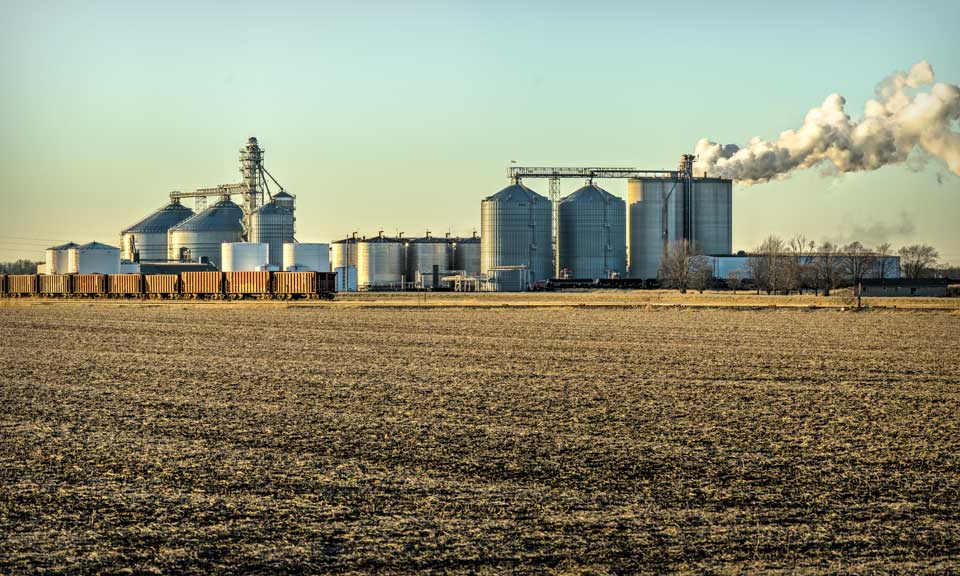Geneva Sugar Conference: Exploring Challenges and Opportunities in the EU Sugar Market

The S&P Global Commodity Insights sugar conference took place in Geneva during April 17-18. The discussions covered the most relevant topics in the sugar market, especially focused on Europe. Experts in the field covered key themes from production, sustainability, diversification, trade to prices.
The first day was focused on production and one of the questions addressed was whether participants would see stability in the EU sugar market. There was consensus among participants that EU+UK will increase sugar beet area in 2024, however, the challenges are already in the horizon with unfavorable weather leading to late sowing and the higher probability of pests’ attacks. French sowing was said to be 2.5 weeks delayed compared to average, a situation not seen in many years, while aphids could already be spotted in the fields. In the UK, sowing is also delayed but on a positive note, around 60% of the crop is using neonics treated seeds, which would offer protection to yellow virus losses. Then, representatives of farmers’ associations put light on the challenges they have been facing over tighter regulations, with a limited toolbox to tackle the cuts on plant protection uses, green deal, among others. Growing sugar beet continues to be risky and if weather plays ad hoc, the sugar yields in 2024-25 could face a significant drop and it remains to be seen if a recovery in planted area would result in a significant recovery in sugar output.
The future of sugar beet was also covered by seeds manufactures, producers and companies offering diversification on the sector. The key message was that there is still limited innovation available to compensate for cuts in chemicals use and more needs to be done from all stakeholders to achieve sustainability goals. Additionally, investments will be necessary and will need to be shared within all the value chain. Risks and rewards also need to be shared with farmers and sustainability needs to encompass all the aspects.
On the consumption discussions, while it remains hard to estimate it precisely, market participants agreed that EU+UK has been facing a negative trend or at best stable. However, population growth in other parts of the world and developing economics are responsible for the global consumption increase. In the world markets, high white premiums could also be an indication that demand is there, with import margins open for many destinations.
Delving into trade, the spotlight was on past and new trade agreements and how they need to continue evolving along with changes in the sugar market. Substantial quantities of Ukrainian sugar entering the bloc was, of course, one of the main themes. Improving solidarity links with Ukraine while still protecting EU domestic market was a balance to be achieved. At the moment, despite logistical difficulties, Ukrainian traders found solutions to export to different destinations and with higher production expected for 2024-25, these new routes will be essential to move the surplus -- that could reach up to 900,000 mt -- to the world market.
In regard to the global market and prices, La Nina effects over main exporting countries like Brazil, India and Thailand could change expectations. Nevertheless, for the short term, markets are more likely to move sideways on a surplus expectation. EU domestic prices are also unlikely to move much from current levels amid the forecast of higher production on top of the current circumstances of comfortable stocks. Still, the weather ahead plus pests infestation remain a risk and cuts in production estimates could drive prices up. It was the consensus that especially in Europe, price volatility can be significant as the domestic market easily goes to deficit from balanced over the seasons.

Thought Leadership
Sustainable Aviation Fuel is being blended with conventional aviation fuel in increasing percentages. Mandated blend volumes and voluntary targets across the globe are aiming to tackle the challenge of decarbonizing aviation. The S&P Global SAF-Jet fuel blend slider uses the month average Platts CIF Northwest Europe Jet cargo price benchmark and the CIF ARA SAF price assessment to show a representation of the blended price of aviation fuel.

Thought Leadership
The price wall visualizes 258 of the most important price benchmarks assessed by Platts across various commodities from crude through to chemicals, LNG and carbon. The wall shows the price performance of these benchmarks over 2023 based on their indexed value from the first day of trading. Click on the commodity button to isolate different groups of resources to see which performed best in 2023, a year that saw dramatic changes in trade flows and demand because of sanctions and price caps on Russian commodities and a recovering post-COVID global economy. Isolate individual benchmarks by clicking on the tile to reveal a unique QR code to navigate to specific Platts methodology pages and average price data for 2022 and 2023. Click to start exploring

Thought Leadership
The role of biofuels in energy transition is growing, as they can help decarbonize hard-to-abate transport sectors, but more supply is needed to keep the world on track with net-zero goals. S&P Global Commodity Insights explores how regional policies are driving adoption and evolving technology is widening the feedstock pool, as well as supply and demand outlooks across transport sectors. READ MORE
Thought Leadership
India must keep investing in the upstream sector to ensure higher oil and gas production to avoid possible supply problems or volatile energy prices, as it embraces technologies that are more environment friendly, Mannish Mahesshwari, CEO of Invenire Energy, told S&P Global Commodity Insights. "Flipping the lens to energy security, sustained under investment in upstream without substitutional capacity and substantial scale in clean and new energy could have far reaching consequences in the journey of just transition," Mahesshwari said on the sidelines of the India Energy Week in Goa. Most of assets of private equity backed Invenire are discovered fields in India that the company has acquired through secondary market purchases from other firms as well as through primary acquisitions directly from the government. The company also has assets in Indonesia and East Africa. The private upstream firm is looking to accelerate production of oil and gas from the discovered fields in its portfolio but has no plans to venture into exploration in the foreseeable future. "We are putting our money where our mind is. As a company, our ability to understand the rocks and the molecules is relatively better than the electrons. We are investing in today's energy system, which is mainly oil and helping in phasing out coal with the help of low-carbon gas," Mahesshwari said. He said that the transition to a world of net zero is more certain today than envisaged in 2015, the year of the Paris Agreement. However, it is the uncertainty around the energy transition pace that adds complexity and risk for upstream projects. The upstream industry has been avoiding spending on projects that would either lock in heavy emissions for years to come or quickly turn into stranded assets. Right focus Invenire currently holds stakes in nine blocks in India. Out of these, four are discovered small fields (DSF) blocks -- one in Assam and three in Mumbai offshore -- comprising a total of about 100 million barrels equivalent of oil and gas. Invenire holds a 100% stake in the four DSF acreages. The company has a small production portfolio of about 12,000 b/d but has plans to boost that volume to 35,000 b/d by 2025. According to S&P Global, Invenire Energy's upstream plans show ambition and promise, considering the wider competitive landscape in India. The company's experience of operating in a tough post-2014 upstream period that saw oil prices slump will certainly influence its post-2023 growth ambitions. For assets outside India, the company might have plans to become a non-operator joint venture partner to take stakes in small-to-medium sized producing assets. The company's focus has been on monetizing discovered resources, having both operator and non-operator portfolios, S&P Global said. Besides India, Invenire has producing fields with 45.55% participating interest in a material acreage located in South Sumatra Basin in Indonesia. "The upstream industry's main focus now is to deliver the supply required to meet demand. Most of the industry's oil and gas investment for the rest of this decade will target advantaged resources -- those with the lowest cost, least risk, and possibly lowest Scope 1 emissions. Beyond this decade, to meet demand, the industry will depend increasingly on late-life reserves growth from legacy supply sources." Mahesshwari said. Similar views Mahesshwari's views echoed comments made by state-run upstream producers ONGC Ltd. and Oil India Ltd. at the IEW conference. ONGC Ltd., which contributes about 74% of India's crude oil and around 63% of its natural gas production, has been actively looking to widen its upstream portfolio as it believes that oil and gas will be a major component of the country's energy mix for the next three decades, while pursuing new crude-to-chemicals projects to prepare for the changing energy landscape, its Chairperson Arun Kumar Singh told the conference. Oil India Ltd. is aiming to double its exploration acreage in the coming years and seeking partnerships to realize the hydrocarbon potential of offshore regions in Indian sedimentary basins, its Chairman and Managing Director Ranjit Rath said. Mahesshwari said that there is a need to take a balanced view of energy transition, adding that any shortfall in upstream investments can add to supply issues and volatile energy prices, as seen in recent years. While it's important to keep looking for opportunities to invest in low-carbon businesses, continuing to responsibly invest in the core upstream business will remain the priority for the company in the foreseeable future. "The potential in carbon capture utilization and storage is enormous, and the oil and gas sector has unique skills that make it ideally placed to lead in reducing CO2 and methane emissions and decarbonize hard-to-abate sectors through carbon upcycling," Mahesshwari said.